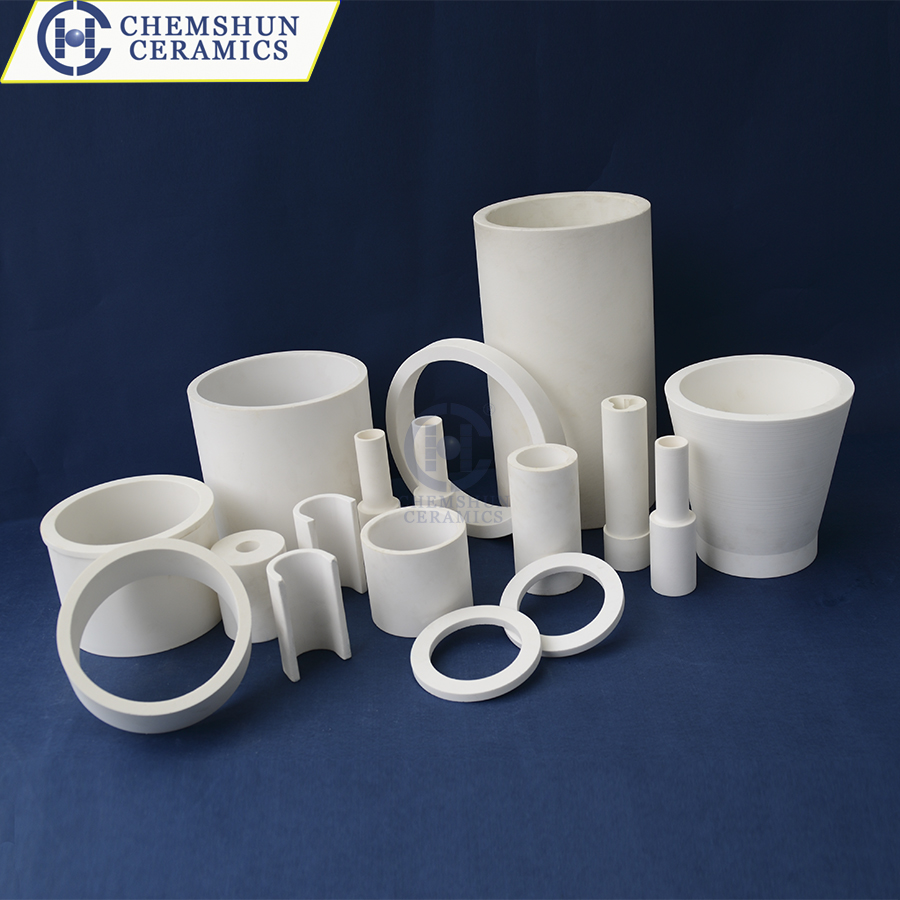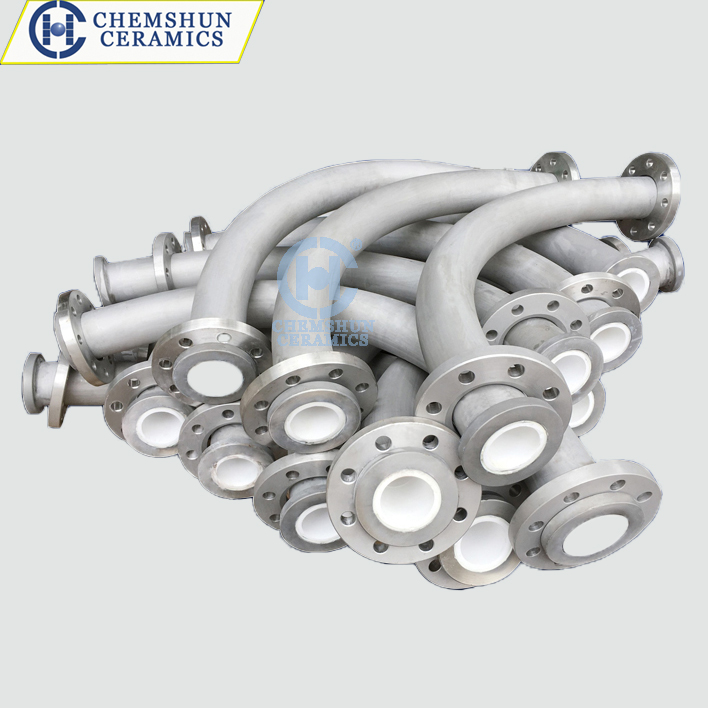Top articles
- Characteristics of Wear-Resistant Alumina Ceramic Tubes
- Wear resistant ceramic pipes for pneumatic conveying of lithium batteries
- What should be paid attention to when choosing to use wear-resistant ceramic linings
- The difference between wear-resistant ceramic pipes and traditional steel pipes
- Precautions for the application of wear-resistant ceramic glue
- Application of wear-resistant ceramic pipes
- High-purity 99.7% alumina ceramics helpful to semiconductor manufacturing technology
- Alumina Ceramic Grinding Balls: High-Efficiency Solutions for Industrial Grinding
- How to Select Suitable Wear-Resistant Ceramic Lining Tiles in the Mining Industry
- Advantages of Ceramic Rubber Composite Liners in Industrial Applications
Latest articles
- Characteristics of Wear-Resistant Alumina Ceramic Tubes
- Wear resistant ceramic pipes for pneumatic conveying of lithium batteries
- What should be paid attention to when choosing to use wear-resistant ceramic linings
- The difference between wear-resistant ceramic pipes and traditional steel pipes
- Precautions for the application of wear-resistant ceramic glue
- Application of wear-resistant ceramic pipes
- High-purity 99.7% alumina ceramics helpful to semiconductor manufacturing technology
- Alumina Ceramic Grinding Balls: High-Efficiency Solutions for Industrial Grinding
- How to Select Suitable Wear-Resistant Ceramic Lining Tiles in the Mining Industry
- Advantages of Ceramic Rubber Composite Liners in Industrial Applications
Your browsing history

Characteristics of Wear-Resistant Alumina Ceramic Tubes
In the field of modern materials science, alumina ceramic tubes hold a pivotal position due to their exceptional performance and wide-ranging applications. Their unique physical and chemical properties drive technological advancements across numerous industries.
I. Characteristics of Alumina Ceramic Tubes
(1) Outstanding Mechanical Properties
Alumina ceramic tubes exhibit extremely high hardness, with a Mohs hardness rating of 8–9, far surpassing the wear resistance of many metals. For example, in oil drilling, slurry transport pipes made of alumina ceramic withstand high-speed particle erosion, significantly extending service life. Additionally, their excellent compressive strength ensures stable operation in high-pressure environments, such as high-pressure gas delivery systems.
(2) Superior Chemical Stability
These ceramic tubes demonstrate strong corrosion resistance against most acids, alkalis, salts, and other chemical media. Whether in strong-acid chemical production or high-alkaline industrial wastewater treatment, their chemical stability prevents corrosion. This makes them highly favored in chemical and environmental industries, ensuring long-term equipment reliability and reducing maintenance costs.
(3) Excellent High-Temperature Resistance
Alumina ceramic tubes maintain structural and performance stability at high temperatures, enduring up to 1600°C or even higher. In steelmaking furnaces, they serve as high-temperature gas delivery pipelines or structural components, adapting to harsh thermal environments and enhancing production efficiency.
II. Manufacturing Process of Alumina Ceramic Tubes
(1) Raw Material Selection and Processing
High-purity alumina powder (typically over 95%, even exceeding 99%) is used as the base material. Prior to processing, the powder undergoes ball milling to refine particle size and chemical purification to remove impurities, ensuring uniformity and enhanced molding performance for superior ceramic tube quality.
(2) Forming Process
Isostatic Pressing: A liquid medium applies uniform pressure to compact raw powder placed in an elastic mold within a high-pressure vessel. This method ensures uniform density and exceptional performance in the formed green body, making it ideal for producing large-sized, high-performance ceramic tubes.
III. Application Fields of Alumina Ceramic Tubes
(1) Chemical Industry
Widely used in pipelines for corrosive media transport, reactor linings, and heat exchangers. For example, in sulfuric or hydrochloric acid production, these tubes safely transport strong acids without leakage. As reactor linings, they resist corrosion and meet high-temperature demands.
(2) Energy Industry
Oil Exploration: Commonly used in slurry transport pipes and downhole packers. Their high wear and corrosion resistance ensures long-term stability in harsh slurry environments, improving extraction efficiency.
Power Industry: Applied in boiler pipelines for thermal power plants, their high-temperature and corrosion-resistant properties ensure system reliability.
New Energy Industry: Used as linings in lithium battery cathode material transport pipes, offering both corrosion resistance and wear resistance with a service life exceeding one year, reducing replacement costs.










